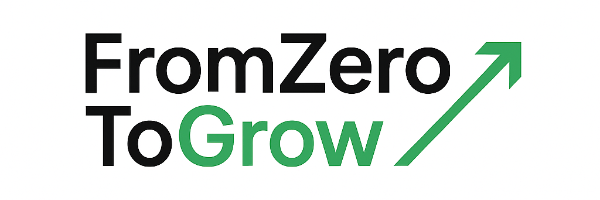Career Change Checklist: 10 Essential Steps
Navigate your career change with this 10-step checklist that covers goal setting, networking, skill building, and financial planning.

Changing jobs can be tough, but with a good plan, you can make things easier and more successful. Here’s a simple look at a tested 10-step process to help you go through the change with sureness:
- Set Clear Goals: Pick what you want in your next job and why it fits your values and skills.
- Research Jobs and Industries: Learn about market shifts, hot roles, and needed skills in your goal area.
- Close Skills Gaps: Check your current skills, see what’s missing, and get training or certificates.
- Build a Network: Meet people in the field you want through LinkedIn, events, or shared contacts.
- Tailor Applications: Change your resume and cover letter for each job, showing skills and wins that fit.
- Prepare for Interviews: Get ready to talk about why you’re moving jobs and how your past work fits the new job.
- Plan Financially: Save for 3–6 months of costs and plan for things like courses or moving.
- Adapt to New Routines: Get set for changes in timing, traveling, or how you balance work and home.
- Stay Resilient: See hard times as chances to grow and focus on getting better, not being perfect.
- Evaluate Pros and Cons: Think about the good and bad parts of your choice, looking at both now and later.
Quick Tip: Most who change careers do well by using what they know and picking roles that match their likes and strong points. With prep and will to keep going, you can turn this change into a great chance.
How to Change Careers Successfully: The First 7 Steps
Step 1: Find What You Want and Set Clear Goals
Before you start with job forms, know what you want and why. Be clear about your goals to avoid jobs that don't match your dreams.
Look At Where You Now Stand at Work
Think about your job. What parts do you like? What's missing? Knowing this is key if you're thinking about changing jobs because many do it as they are not happy.
Many switch jobs to get more money, follow a dream, better balance work and life, work with new bosses, make a big difference, learn new things, or face new tasks. For example, only 32% of workers think their pay is right, while those who switch jobs often get about a 10% raise in pay.
Kaitlynn Arvidson, who leads Graduate and Professional Career Planning at Regis College, points out:
"Some of the most common reasons people consider a career change are wanting to earn a higher salary, looking for careers that provide a better work–life balance, or even pursuing a newfound passion."
To learn more about what drives you, think about:
- Why do I want to switch my job?
- What parts of my job do I not like?
- Am I looking for work that fits my core beliefs or gives me more time for other things?
- What do I feel is missing in my work or life now?
Changes in what you value or aim for in life can weigh heavily on job choices.
Know Your Skills You Can Use Elsewhere
A big thing that holds people back when thinking of a new job is not seeing the skills they already have. Transferable skills - skills from work, help you did for free, school, or life - are useful in different jobs or fields.
Kaitlynn Arvidson points out how key it is to know these skills:
"Taking an inventory of all the skills that you have mastered over the years is really important. And oftentimes we see students who are career changers overlook how many of their current capabilities can be applied to a new role."
To find skills you can use in many jobs, look at job ads for the roles you like and see what skills they want most. Then, think about how your past work shows you have those skills.
| Basic Skill | Explanation |
|---|---|
| Talking | Sharing thoughts well, by talking or writing |
| Trust | Always being there, and ready |
| Working with others | Getting along well with people to get things done |
| Keeping things in order | Using time and things well |
| Change-ready | Doing well when things don't stay the same |
| Leading | Helping and leading people to meet shared goals |
For instance, over 35% of job ads ask for good talk skills. They are much wanted in many work fields. A shop staff good at fixing buyer problems might move to a job facing clients in health care or tech. Just as, a student handling many due dates could do well in a busy office.
Richard Branson, who started the Virgin Group, puts it in easy words:
"I never judge people by their education and qualifications. We focus on hiring people with transferable skills – team players who can pitch in and help others in all sorts of situations."
Make Clear Job Goals
When you know what drives you and what you're good at, you need to set clear aims for your job change. Setting clear targets helps guide you and boosts your shot at doing well.
Research tells us that folks who jot down their aims are 1.2 to 1.4 times more likely to reach them. Maria Kraimer, who teaches human resource management at Rutgers University, says this:
"We have found from research that goal setting does help predict career success. People who set career goals tend to have higher salaries and more promotions, and are more satisfied with their careers."
The SMART way helps you make good goals:
- Specific: Clear and direct
- Measurable: You can see your progress
- Achievable: Doable in your real life
- Relevant: Fits with what you care about
- Timely: Has a clear date
Your goals need to show what win means to you. Start by thinking about your best life and work, then set it into small steps. For example, big goals can turn into small tasks you can check as time goes by.
Work goals might be about doing more, faster, learning, or growing as a person.
Change them as needed and check them often. Stephanie Lovell, who leads marketing at Hirect, says:
"It's in those six-month check-ins - being really open and flexible to making updates, making changes and checking in to see where you're at. Don't allow yourself to slide on things. Make sure you are progressing and you are learning but allowing yourself the room to be flexible."
It's good to know that 94% of workers stay longer at jobs that give them chances to learn and move up. When you set your goals, add plans for learning and growing in your new area.
With your goals set, you can start to look at jobs and fields that match what you want to do.
Step 2: Look into Jobs and Fields
The next thing to do when changing your path is to deep dive into the jobs and fields that fit what you want. This part is all about knowing what's out there - what jobs are hot, what are folks looking for, and what you need to do well.
Learn About Key Fields
To pick the right field, start by finding ones that match your style and give true chances to grow. Start wide, then get more specific as you learn more.
Begin by looking for broad words linked to areas that grab your interest. Say you like tech, look into jobs such as software work or data safety. If hospitals draw you in, check out jobs like nurse or hospital admin. This way, you get a clear, full view of each field and spot the big names.
Miranda Zhang, who made a smooth shift in her career, shares the worth of this looking-around phase:
"Networking calls have been immensely helpful not for clarifying my cause priorities but rather for gaining an understanding of the concrete skills and responsibilities that a role might involve."
Use LinkedIn to check on job openings and see the big changes in work fields. You can find out that many people need tech jobs just by looking at the numbers. In the start of 2025, few tech workers did not have jobs: only 2.8% of software makers, 1.8% of system checkers, 2.3% of safety checkers, and 2.5% of IT help folks - much less than the overall stand of 4.2%.
Places like company social media pages and their own sites are full of clues too. From these, you can learn about how a company acts, what it holds dear, and how it fits into the community. This helps you see if you'd like their way of working.
After you know the big picture, it's time to learn more about certain jobs and what they need.
Know Job Needs
Finding out what a job really needs can be hard. Job lists give you a basic idea but may not tell you everything about what you need to know or do.
Start with job sites like Indeed, LinkedIn Jobs, or ones very into one work area. Check for the main skills asked for in many ads - those are key.
Susan Kaveny, who changed her career path, tells us how she does it:
"I look at the websites of the companies I would like to work for. After that, if I find a job I'm interested in, I tailor my resume for that exact job."
The job world today is a mix of hard parts and chances. With 63% of bosses saying it's hard to find good people to hire, this opens a door for those who want to change jobs and have the right set of skills and will to get ahead.
Talking to people is also key. Chatting with folks who work in the field you want can show you what they do daily, what big issues they face, and what skills you need. These talks can help you see what the job really needs from you.
It's also very important to check if companies are real, especially if they are small or let you work from home. Look at their site, make sure they have a real place, and use sites like opencorporates.com to look up their past. This makes sure you are looking at real chances.
For instance, in tech, areas like business help, making things, moving things, money help, and IT are hiring a lot. But, even in the same field, what you need to know for similar jobs can be very different.
Job needs often include both hard skills (like tech skills, official papers) and soft skills (like talking well, leading, solving problems). As you look into these, note what keeps coming up. If many places point out certain papers, tech know-how, or how much you have done before, make those your main points for getting better. This look into things sets up how you spot and fill the gap from where you are to where you want to be.
Step 3: Close Skills Gaps
Filling up your skills gaps is vital to making you a top pick for your new job. Once you find out what skills your dream job needs, you can see what you're missing and start to work on those areas. This move can really change your game - bosses need to see that you can jump in and start doing well right away.
Do a Skills Gap Check
Begin by checking your skills now against what your wanted job needs. Split your skills into two groups: hard skills (like tech know-how, certificates, or knowing software) and soft skills (like how you talk, lead, or work with others). Think wide - count skills from work, school, or even your own life.
Next, look again at the job ads you looked at before. Find skills they talk about a lot, as these are key for the job. Compare these "must-haves" with your list to spot where you lack.
A deep skill check can also show hidden strong points you might not see before. It's also key to think about which of your skills might not be needed soon due to robots doing them. For example, jobs that repeat a lot tied to hard skills might get done by robots. Instead, work on getting better at skills like creative thought, solving problems, and talking to people.
Keep up with what's new in your industry and tech to keep your skills up to date. Once you see where you need to grow, get ready to act and fill those gaps.
Learn New Skills
To fill your skills gaps, you need to look for ways to learn. Luckily, there are many ways to get new skills, no matter your time or money situation.
Online classes are a great place to start. Sites like Coursera let you try classes for free, only charging if you want a certificate. Google Digital Garage and Simplilearn also have no-cost classes and certificates on many topics. Whether you need to get better at basic computer stuff or learn more about big project handling, these options can help.
Certificates can also set you apart in tough job markets. For instance, the "cyber safety" area may have 3.5 million jobs not filled by 2025, making certificates here very good to have. Similarly, with a projected 6% growth in project handling jobs from 2022 to 2032, a PMP certificate can open big doors.
For those with less time, micro-learning - short, sharp learning bits - can help you slowly build skills. Training while working is another good way. Talk to your boss about doing jobs that fit your skill goals or follow team members who can guide you. Many places also have workshops, training, or online learning during work hours.
Helping out is a good way to learn by doing and meet more people. A site like NonprofitReady.org, for example, offers free courses that teach useful skills for managing helpers. Helping in the area you like not only builds the right skills but also lets you try out your interest and meet experts.
To keep things in order, set up a plan for learning with clear, easy to check goals. Splitting hard skills into smaller bits can make things less hard to handle. Start with simple stuff and slowly add the tougher stuff.
Learning needs time and hard work. You won't know it all right away, but steady work will make you better and more sure. Using what you learn in your job now can also help make it stick and show future bosses that you take action and can do well.
Also, don’t miss out on making connections while you learn. Go to events and meet others on the same journey - it’s a great way to swap ideas and spot chances.
Step 4: Make Good Work Friends
Making good work friends is key to do well when you want to start a new job path. When you move to a new area of work, these friends become even more important. They can show you job spots you didn't know about, tell you secrets about the field you want to enter, and lead you to people who can make the change easier for you.
LinkedIn, which has a huge 700 million users all over the world and makes over 13,000 new links every minute, is a great way to meet people. But meeting people well is more than just hitting "Connect" online. Mixing online talks with meeting people face-to-face at work events or meet-ups makes stronger, longer-lasting bonds.
"Networking is simply the cultivating of mutually beneficial, give and take, win-win relationships. It works best, however, when emphasizing the 'give' part." – Bob Burg
This point is key for those swapping careers. Don't just think about what others can do for you, but what you bring. Your new view and mixed experiences may give ideas that old pros find fresh and useful.
Grow Your Network
Start with clear aims for your networking work. Are you after job tips, industry help, or a guide? These goals should shape your plan and steer your talks.
Start with the people you know. Reach out to old work friends, school pals, friends, and family - they may know someone in the field you want. Warm intros often have trust and worth that cold calls lack.
Then, look into pro groups tied to your new field. Local clubs and big groups often have events like meetups, classes, and talks. These are good chances to meet folks with your interests and to keep up with trends in your new field.
When you meet new people, have a ready, 30-second talk that shows your skills, past, and job aims. Having this talk ready means you leave a strong, true mark.
Be truly keen when talking to others. Ask deep questions about their job paths, the hard bits they've faced, and any tips they can offer. This not only teaches you but also helps them remember you.
Once you've begun to build ties, work on your online look to back your pro image.
Improve Your Personal Brand
Your personal brand shows how you look as a pro, and during a career swap, it’s key to line it up with your new path. Start with updating your LinkedIn page, which often is your first show for possible links and bosses.
Ensure your page shows your career move. Point out skills and wins that fit your new field. A good photo and a well-made bio that talks about your change and shows your love can do a lot.
When sending link requests, make them personal. Talk about shared likes or common friends to up your chances of real chats.
Join LinkedIn groups that fit your field aim. Being part of talks and networking with group folks can keep you seen and linked. Stay active - comment, post, or share news - keeps you lively in your field.
Think about making your own posts to be seen as a wise voice in your new field. Writing pieces, sharing ideas, or even giving good thoughts on industry posts can mark you as informed and active.
Keep up with your network. Cheer on others' wins, pass on useful chances, and offer help when you can. Networking isn’t just a one-shot deal; it’s a process of making and caring for ties.
For people who want to put money into making their network grow, LinkedIn Premium Business costs $59 each month. It gives you tools like better search options and lets you send notes to folks not in your direct group. These tools are good for when you want to make more work friends.
Step 5: Get Ready for Applications and Interviews
Now you have a good group of contacts, it's time to use these people to get job chances by making great applications and doing well in interviews. This step is all about making your way of applying different and showing off who you are with sureness, even in a brand new work area.
It can be tough to change jobs, but this is your moment to show job places how you are special and fit their needs. A same-old way won't do here - you need to make each application just for them.
Make Each Job Application Special
Make sure every application fits the job you want. Don't just change the names of firms; really look at what the job place wants and tell your story to match that.
Use the job advert as a guide. Find the main skills and words they use, and add them to your resume and cover letter.
"When I review resumes, I scan for certain skills such as contract writing, program development and supervisory experience. I only interview candidates that have one or more skills specific to the job description. The more skills they have pertaining to the job, the more likely I am to interview them."
- Jessica Hinkle, Hiring Manager
Kick off with a sharp resume start - two to three lines that show your best work skills and experience. Use words that match what the job wants to quickly connect.
Change how your job history looks to show off parts or wins that fit the new job you want. Say you're moving from selling to managing projects, point out times you led campaigns, handled deadlines, or worked with many people. Use bullet points to make these links stand out and hit hard.
Adding numbers helps prove your wins. Instead of just saying you "upped sales", be specific, like "raised sales by 23% with focused email drives." Just make sure any numbers you give are right and can be checked.
Look at Kelley Greene: going for a Sales Manager job at Saul's Supplies, she saw the job post wanted strong team and sales plan skills. So, she made her resume show her history of leading sales groups and making plans that pushed sales up by 15% each year. She also put in needed skills like predicting and building a team to fit the job just right.
In your cover letter, speak to the hiring boss by name, and in the first part share why you're switching jobs and the good, new things you can offer. Don't just repeat your resume - use this space to share your shift's story and why it works for both you and the job place.
If you've got new certificates or did training for your job change, show them off. They show you're serious and fill in any gaps between your old job area and the new one.
Keep neat by having a list of places you've sent applications. You could use a chart or apps like Teal’s Job Tracker to note job names, when things are due, follow-ups, and how it's going. This makes sure you're ready and don't miss out.
After you’ve fixed up your applications, turn your focus to getting ready for the interview.
Work on Your Interview Skills
Interviews can be hard when you’re moving to a new career area, but they're your chance to frame your job change as a smart, thought-out choice. Being ready and sure of yourself is key.
Start by making a short two-minute talk that brings out your skills and worth for the job. It's not about listing each job you've had - it's about showing you're what the job needs. Practice it until it comes out easy and sure.
Don't just look up basic stuff. Learn the job place’s past, what they make, and what they aim to do, but also look into latest news, how they're doing money-wise, and what's up in their work area. This bigger picture shows you really care and lets you talk their talk.
Get ready for hard questions about why you’re switching careers. Use the STAR method (Situation, Task, Action, Result) to lay out your answers, focusing on times that show your skills that can move over to the new job. Share what pulled you to the new area and how your past jobs give you a special plus. Keep looking forward, not just talking about any bad bits from past jobs.
For example, if you are moving to project management, tell a tale of how you led a team from different parts to meet a short deadline. Real stories like this let those hiring see how your old wins fit their needs.
Bring your work samples, draft plans, or proof from training programs too. These real things let those hiring picture what you can add and show how serious you are about this change.
If there are parts you are still learning, be true about them. Mix this truth with tales of how you have fast picked up new skills before, showing your will to change and wish to grow.
At last, think up good questions for the one who talks to you. Ask about hard things the team faces, chances to grow, or main goals for the job. This lets them see you care not just about getting the job, but also about how you can truly help.
Step 6: Get Money and Plans in Order
Switching jobs affects more than just your day at work - it can touch your money and how you live. Getting ready for these changes early can help you move from one career to another without too much trouble.
"Making a career change is an exciting yet challenging time that requires not only emotional readiness but also solid financial planning."
Before you jump into a new job, sort out your money and plans. This way, you can focus on the new work with no extra stress.
See if You're Ready Money-wise
First, check your money state. Look at what you make and spend, and tweak your plan for what's coming. You should have savings that can cover 3–6 months of costs. If you aren't there, start putting money aside now in a special account.
If your job feels too hard to stay, you may want to leave right away. Yet, Vicki Salemi from Monster.com says don't rush quitting. She knows a lot about jobs and she thinks it's bad to just act fast without thinking.
"Don't just wing it. If you're in a toxic work environment, you might be tempted to say, 'I'm done, I'm leaving today.'"
Don't just spend; plan ahead. Cut out extra costs, as money expert David Haas says:
"Create a budget so you understand what your financial runway and flexibility is."
Your budget must also cover job costs, like skill courses, certificates, meet-up events, or moving costs. Think about having a different savings account for these costs. Extra money from bonuses or tax refunds should put some into this fund, and getting rid of high-cost debts can make your money stretch further.
Money expert Greg Guenther talks on how key it is to plan ahead:
"Career changes come with risk. Strategic planning can create financial stability and a strong foundation for the future."
Make sure to check your retirement funds. Think about if you want to move a 401(k) or keep it with your old job, and make sure your money matches your new money aims. Look up pay levels for the job you want, and even though 58% of folks asked say they would take less money to change jobs, know your value and set the least money you will take.
Deal with Moving Needs
Moving stuff matters as much as money stuff. If you must move for your job, look up living costs in the new place, like homes, power, and day-to-day costs. As MVM Moving & Storage says:
"Relocating for a job is a significant decision that requires careful planning. A well-thought-out approach will help ensure a smooth transition and position you for success in your new role."
Keep in mind that moving to a big city can mean high living costs. What looks like a pay boost can end up feeling like a pay cut when you count housing and other bills.
Getting around is key too. In some U.S. cities, the average person loses 51 hours a year to travel time. Try out apps to check travel times at busy times, and look at public buses or trains and their costs. Places like Columbus, Ohio, may have shorter travel times than busy spots like Los Angeles.
Your new job may change your work times, like night shifts, weekend work, or lots of travel. These changes can touch your family life and daily plan, so it's good to plan now. If moving, check how safe the place is, how good the schools are, and if there are parks and fun things to do. Joining local things or work groups can make you feel at home quick.
Also, talk about work choices that bend a bit with your new boss. Working from home, flexible times, or short work weeks can make life easier, more so if your travel or family needs change.
Timing your job change well is key. Think about what you need to do now, and set your papers right to make it smooth. A smart plan can help you handle this big move with sure steps.
Step 7: Keep Strong and Think Right
Jobs change can test you a lot. It's not often easy, and how you face hard things can shape if you win or not. A strong mind is not just good to have - it's key for getting through the ups and downs.
Our minds think change is bad, but you can learn to see hard things in a new way. Taking on a growth mindset - thinking that you can get better with hard work and learning - can turn bad times into chances for growth. This way of thinking builds on the first steps of planning, making you ready to meet hard things with a sure heart.
The line between those who do well in job changes and those who don't is often in how they think. A set mind runs from hard things and thinks trying is of no use, while a growth mind takes them on as ways to get better.
"Ultimately, the most successful professionals are those who view challenges as a chance to grow."
- Ashley Miller, SHRM-CP
Deal With Hard Times
Switching jobs is often not easy. You might get turned down, have weird chats, or think less of yourself, making it all seem too much. The trick is to change how you see these times.
Don't think of fails as the end. Look at them as chances to learn. Didn't get the job? Think about what you can better - like how you talk in meets or your info on the firm.
Dawn Graham, Ph.D., has a good way of seeing this:
"If you're not experiencing at least some misses, chances are you're playing it too safe and missing out on some great opportunities."
- Dawn Graham, Ph.D.
When bad thoughts sneak in - like "I'm not good" - fight them with facts of your past wins. Be around people who push growth, as their help can lift you up in hard times.
Also, don't look down on the power of self-talk:
"The most important conversations you'll ever have are the ones you'll have with yourself."
- David Goggins
Make clear goals. Switching jobs needs time, so allow room to get skills, get better, and meet people without pushing for quick wins.
Cheer On Each Step
It's simple to just look at your big goal and miss seeing the small wins you achieve as you go.
Watch what you do, not just the results. Be it applying for jobs, finishing a class, or having a good talk for work links, every bit counts as a win to cheer for.
Nabil El-Ghoroury, Ph.D., says it just right:
"Reframe success to think about progress, rather than perfection."
- Nabil El-Ghoroury, Ph.D.
Make your big aims into small, doable jobs. Don't just plan to "land a new job", make real plans like "send out three resumes this week" or "talk with two experts in my field." Write down what you do each day, and look at it often to keep your drive high. Enjoy the small wins - maybe with a good meal or a calm night.
Know that growth needs time, and troubles are just steps on the way. As Nabil El-Ghoroury, Ph.D., says:
"Her strategy was 'Just keep swimming,' which, at its core, is truly a growth framework. As long as you're still swimming, you can figure out what can help you out in your work."
- Nabil El-Ghoroury, Ph.D.
Pay attention to your own path, not how you stack up next to others. Take ideas from their wins, but don't let that make you feel less proud of what you've done.
Check Good and Bad Points
Before you jump into a new job path, it's key to stop and look at the full view. A new job can change how much money you make, your time, and how you live your life. Knowing the good and bad can help you choose well.
Look at Risks and Gains
Changing jobs can be fun, but it comes with give and take. Let's see what good and bad things could come your way.
The Good Stuff
A job switch can bring many good things. For one, you might get more money - about 15% more on average - and have a better balance between work and home life, do tasks that mean more to you, and match your own life goals better.
More people are changing jobs now than before. Just look at Gen Z: they might have 15 to 18 jobs in 5 or 6 fields through their work life. This shows job changes are more and more a part of growing in your job.
The Bad Stuff
There are hard parts to think about too. Starting over might mean you make less money at first as you learn in a new area. You might also lose the high rank, know-how, and work friends you've made.
Data shows that more than one-third of new businesses fail, showing the risks of starting new. Also, you might have to pay for more school or training, which costs time and money. Getting used to a new day-to-day can be hard too.
| Good Sides | Bad Sides |
|---|---|
| More money (about 14.8% more) | May start with less pay |
| Better balance in work and life | May lose old rank and know-how |
| More happy in job | Need time and money to learn again |
| More chances to grow | Not sure and can be hard |
| Fits better with what you believe | Need to make new work friends |
Think hard and weight all the parts to see if the good things beat the bad for you.
Making the Comparison
To pick well, look at your now job and the one you want. Check things like how it can grow, how it feels to work there, and how sure the job is to stay. Tools like Indeed’s wage look-up and facts from the U.S. Bureau of Labor can help you find what you need to know.
Don’t look past your own life bit. Like, if you take care of a family, having some saved cash - for sudden needs - can ease the change and drop stress.
Testing Your Decision
Before you fully choose, try it first. Help out, do some pay-per-job work, or follow someone in the job you like. Doing these real things can show you more about the new job than just what the job post says.
Conclusion
Changing jobs doesn't mean you start over. This 10-step list gives you a clear and easy path to follow. Each step helps you move ahead with a strong goal and clear mind.
Facts tell us that most workers switch jobs 5 to 7 times in their life, and in 2024 alone, over a million jumped to new roles. You're not by yourself in this. This plan provides the help and way you need to step boldly into your new phase.
By knowing your strong points, what you value, and your aims from the start, you save time and power by just going for chances that meet your plan. This base is key to look into fields, fill in skill gaps, and make work ties. As Richard Bolles, who wrote What Color Is Your Parachute?, said wisely:
"Self-assessment is the key to making successful career transitions."
Your skills are a plus, not a do-over. In fact, 69% of hiring bosses look for skills you can use in many jobs when they pick people for new roles. Your past work is a help, giving you a boost when you change paths.
Having money set aside is key too. If you save cash for 3–6 months of living costs, you can pick wisely and not just jump at any job. Being tough is also key. When you face hard times with a strong mind, you stay on track, even on rough roads.
The benefit of matching your career with what you're good at and love is big: folks in jobs that fit their skills and likes are six times more likely to be into their work. This isn’t just about getting any job - it’s about finding the right spot for your skills, what you value, and your way of life.
Keep your eye on growing yourself during this time. Every move you make gets you nearer to a job that fills you with energy and joy.
For more help, FromZeroToGrow has a community and a resource center to keep you pushing on and in the know. If you need tips for tough spots or a push in hard times, getting help as you go can make a huge difference.
FAQs
How can I find and use my skills to shift my work life?
How to Use Your Skills to Switch Jobs
Shifting jobs can seem scary, but your skills may be your best tool. Begin by looking at what you do well. This might be soft skills like good talks, working with others, or fixing problems, or hard skills such as handling tasks or knowing certain tech stuff. Think about past jobs and pick out skills that fit diverse work areas.
After finding your skills, learn about the field you want to get into. What skills are the bosses looking for? Make your resume better and get ready for interviews to show these skills. Use true stories to explain how you used these skills before. This proves you can do well and helps bosses feel sure you can handle a new type of job.
With some planning and trust in showing your skills right, you can make yourself a top pick for a different kind of job.
How can I set up a work web in a new job area if I know no one?
Making a web in a new job area may seem hard, but you can do it with the right mind and plan. A good first step is to go to job events, talks, or local groups. Such spots are good to meet job folk, swap thoughts, and keep up with new trends. Do not look past sites like LinkedIn - join small groups, talk in chats, and send nice, real invites to connect to folks whose work you like.
Another good way is to ask for chats to know more. These easy talks with job experts not only teach you but also start real links. Give first - share cool facts, talk about someone's work, or just back them up. Be true, warm, and keep showing up. Check back with them now and then. Keeping these links good and deep matters. Keep in mind, making a work web is not just about having many contacts; it’s about making true, long links.





